ESCAPE
Kleinzee Shipwreck Trail — South Africa’s Diamond Coast, where vessels fear to land
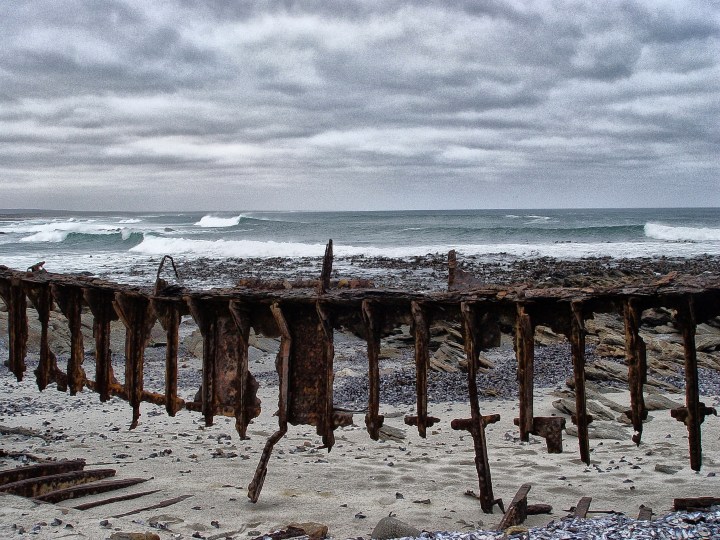
Kleinzee is not all about the diamonds. Some distance from the mining operations begins an equally interesting journey of discovery: the Kleinzee Shipwreck Route.
Back in the late 1920s, while diamond fever was sweeping the northern reaches of the West Coast, a teacher called Pieter de Villiers was on another mission. He was building a farm school near the mouth of the Buffels River at a place called Kleinzee (Little Sea).
While looking for lime to whitewash the walls, he kicked up a diamond. There was, predictably, huge excitement. But only a few years later, in 1932, the Great Depression sank the world’s economy into a diamond-indifferent torpor. Kleinzee Mine was officially closed, but 50 people – male workers, their wives, their children and a small band of domestic workers – still lived in the little company town.
“The ‘senior staff’, with little work to do, preserved a pretentious exclusiveness,” writes Peter Carstens in his book In The Company Of Diamonds, “holding select dinner parties, picnics on the beach and in the veld, and ostentatiously displaying the cars that they could barely afford to run.”
Once the world’s economy rose, diamonds regained their sparkle and Kleinzee Mine began humming once more.
Today, after being shut for a number of years, new owners are preparing to work the local diamond fields again. But some distance from the mining operations begins an equally interesting journey of discovery: the Kleinzee Shipwreck Route.
The first stop is the wreck of the Border, which went down in dense fog at high tide on 1 April 1947. All that was left of this cargo ship was a rusty hull on the beach. However, look more carefully and one will find hardy Cryophytum crystallinum (brakslaai in Afrikaans, Crystalline Ice Plants in English) battling through the beds of thick rust on the deck of the Border.
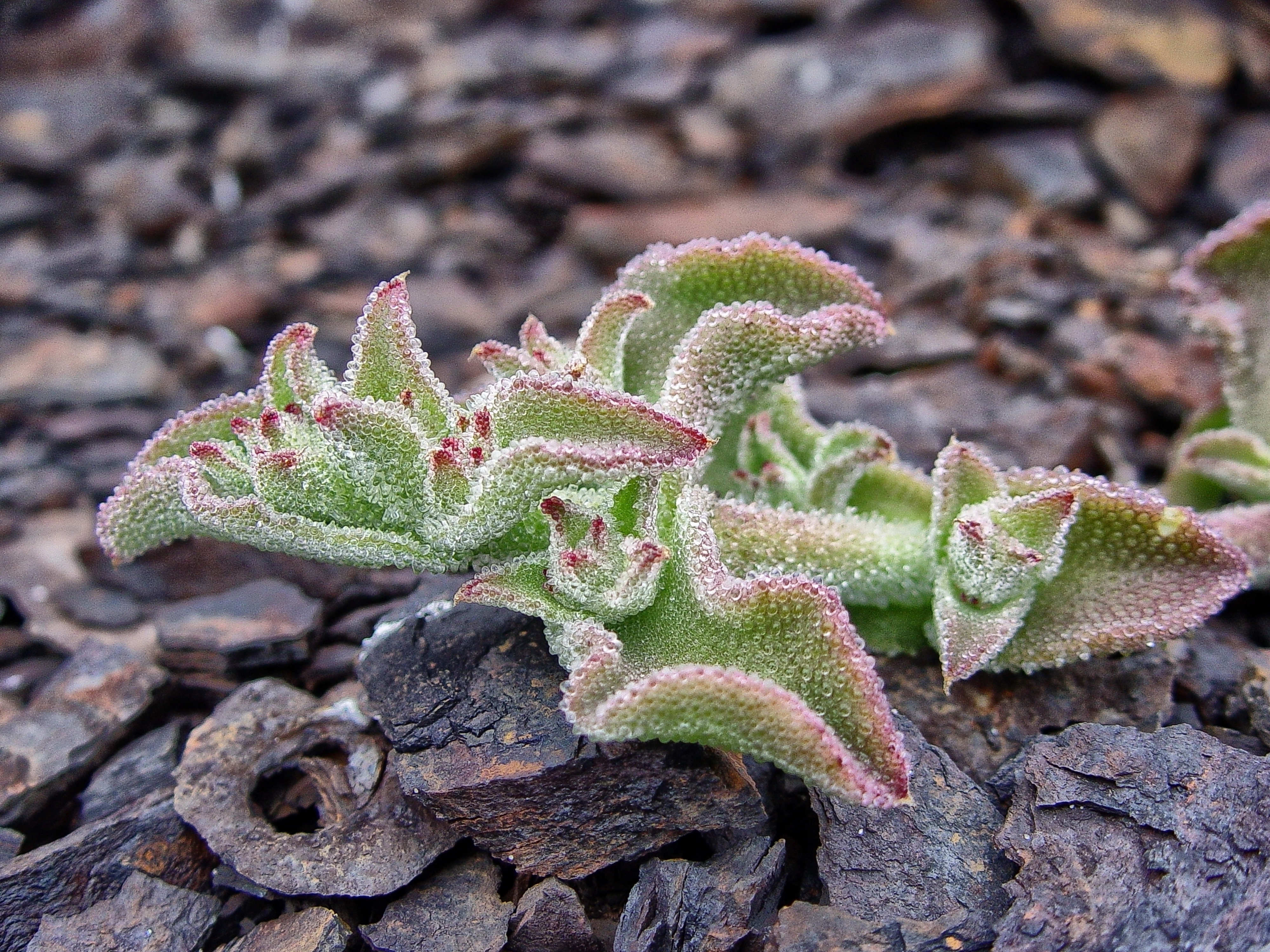
This irrepressible Cryophytum crystallinum grows on the rusted surface of the wreck of the Border. (Photo: Chris Marais)
Drive on and stop at one of the many wild bays, where drifts of plovers run up and down at the edge of the breaking waves. Scouring winds drive the warmer water near the surface off so that the icy waters deeper down are forced up, carrying plankton and nutrients with it. This is the Benguela Current, the Upwelling that makes the waters off the West Coast so rich.
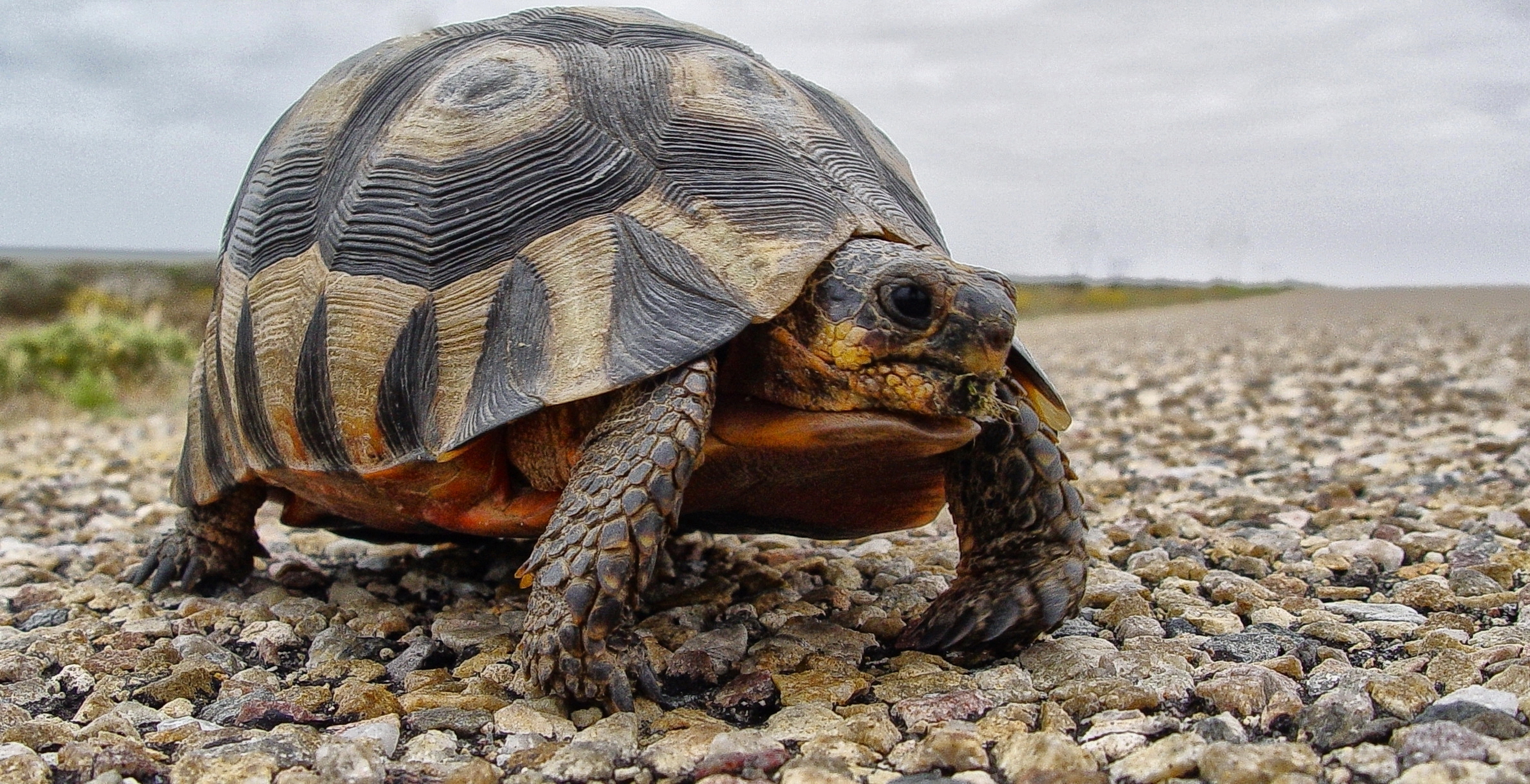
Tortoise on the move, looking for a mate somewhere in the wilds of Namaqualand. (Photo: Chris Marais)
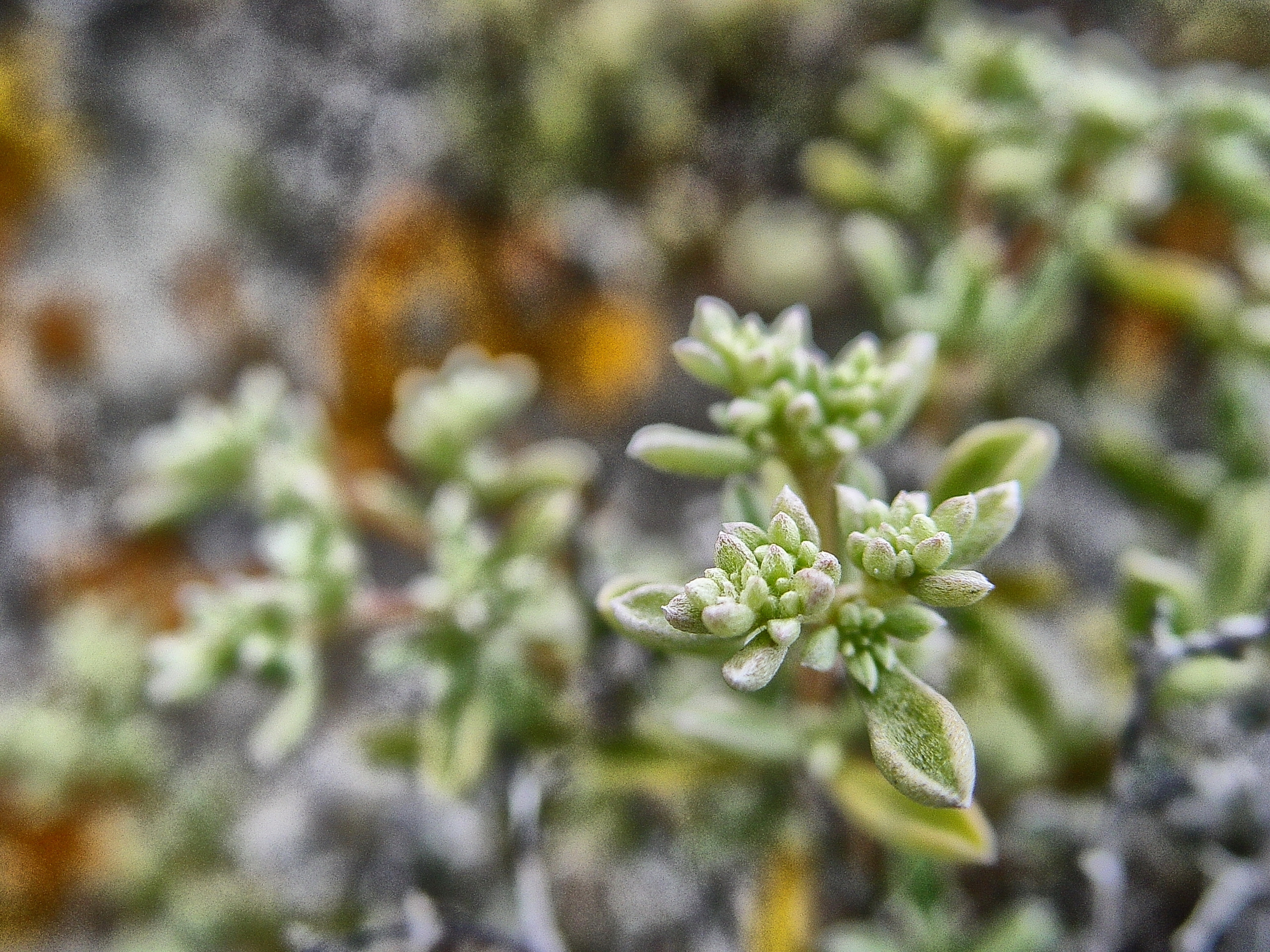
Skilpadkos (tortoise food), also known as Glottiphyllum, a West Coast common succulent. (Photo: Chris Marais)
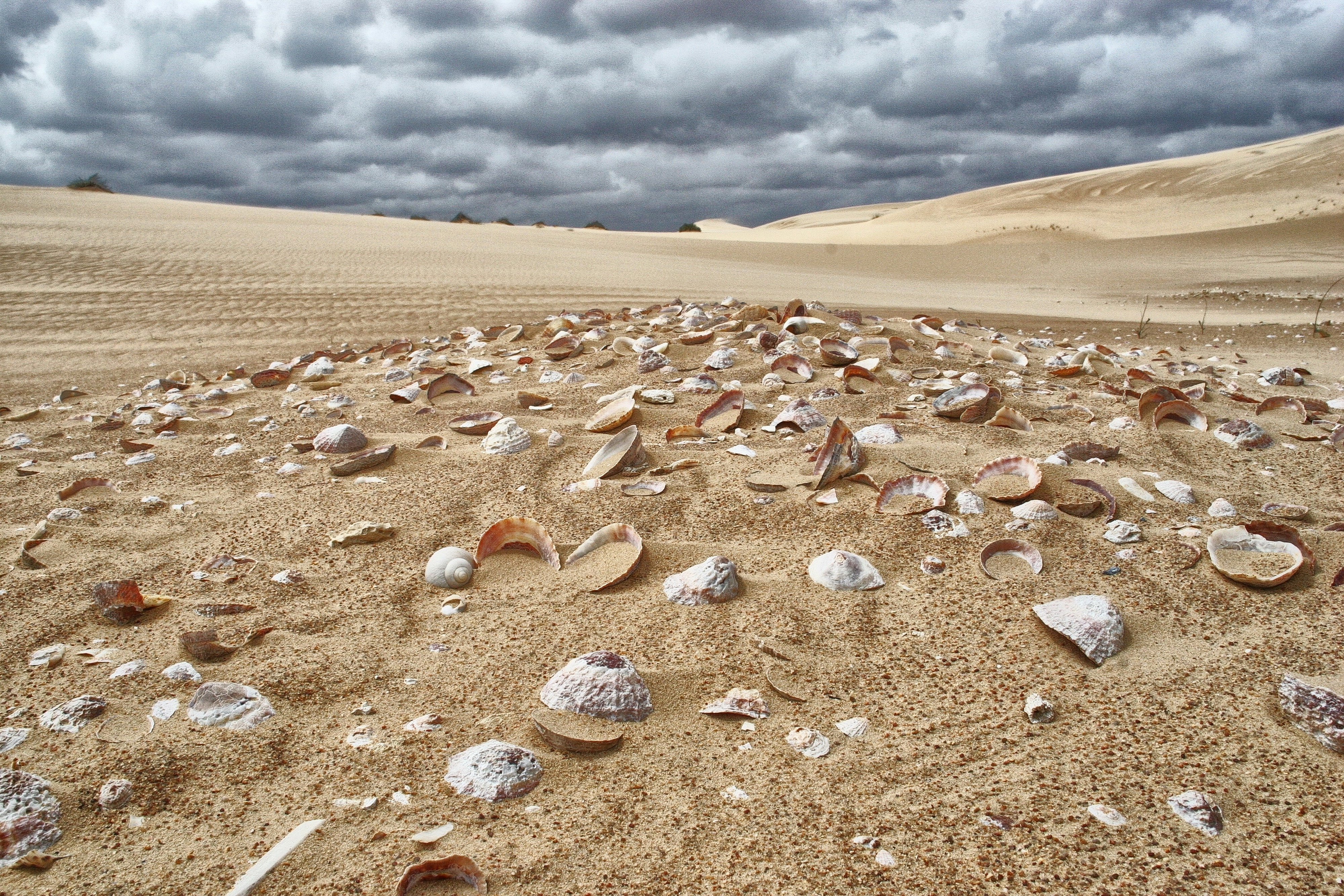
Ancient midden just inland from the Kleinzee coast. (Photo: Chris Marais)
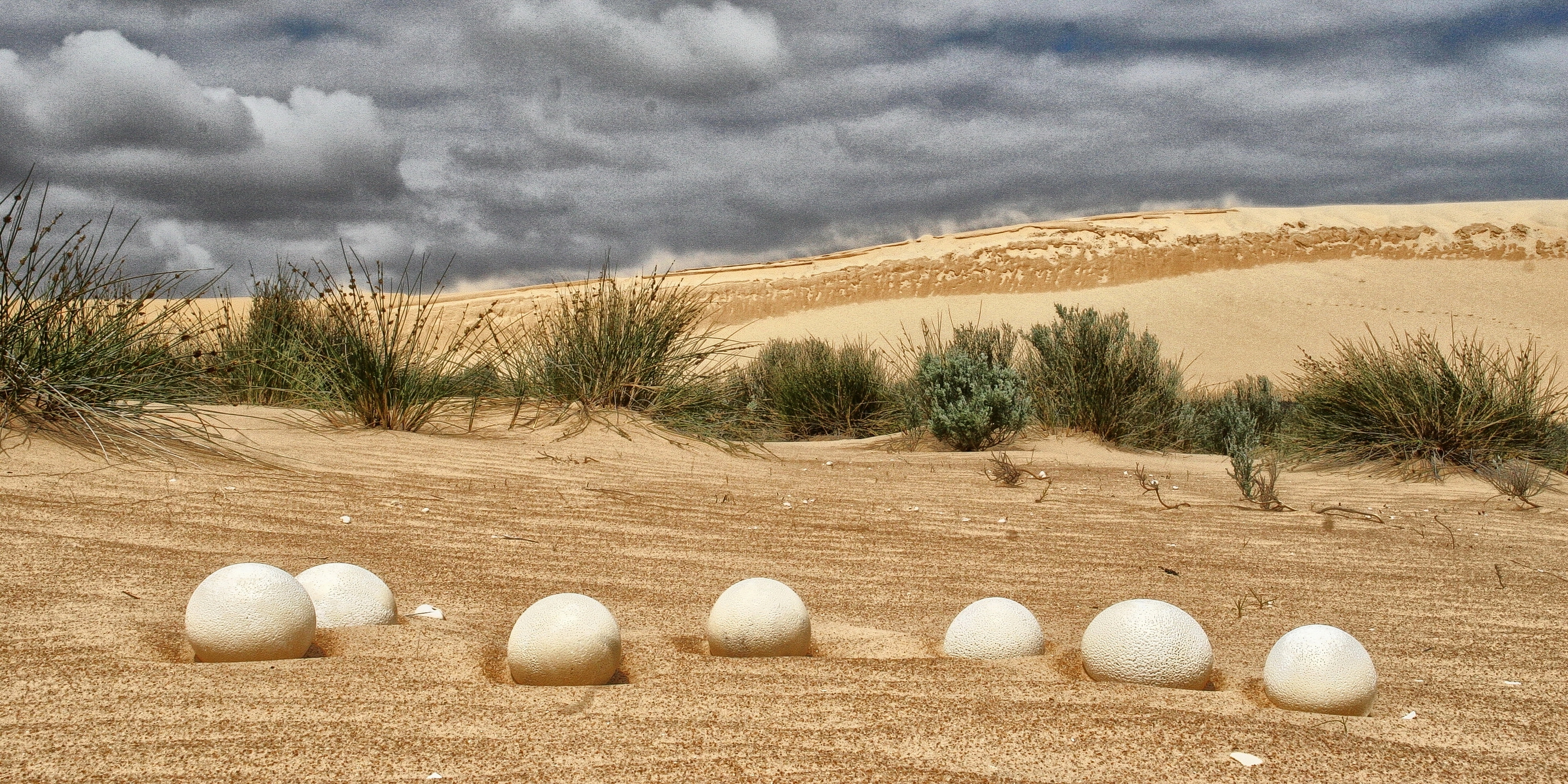
A clutch of ostrich eggs – can a large parent be far away?
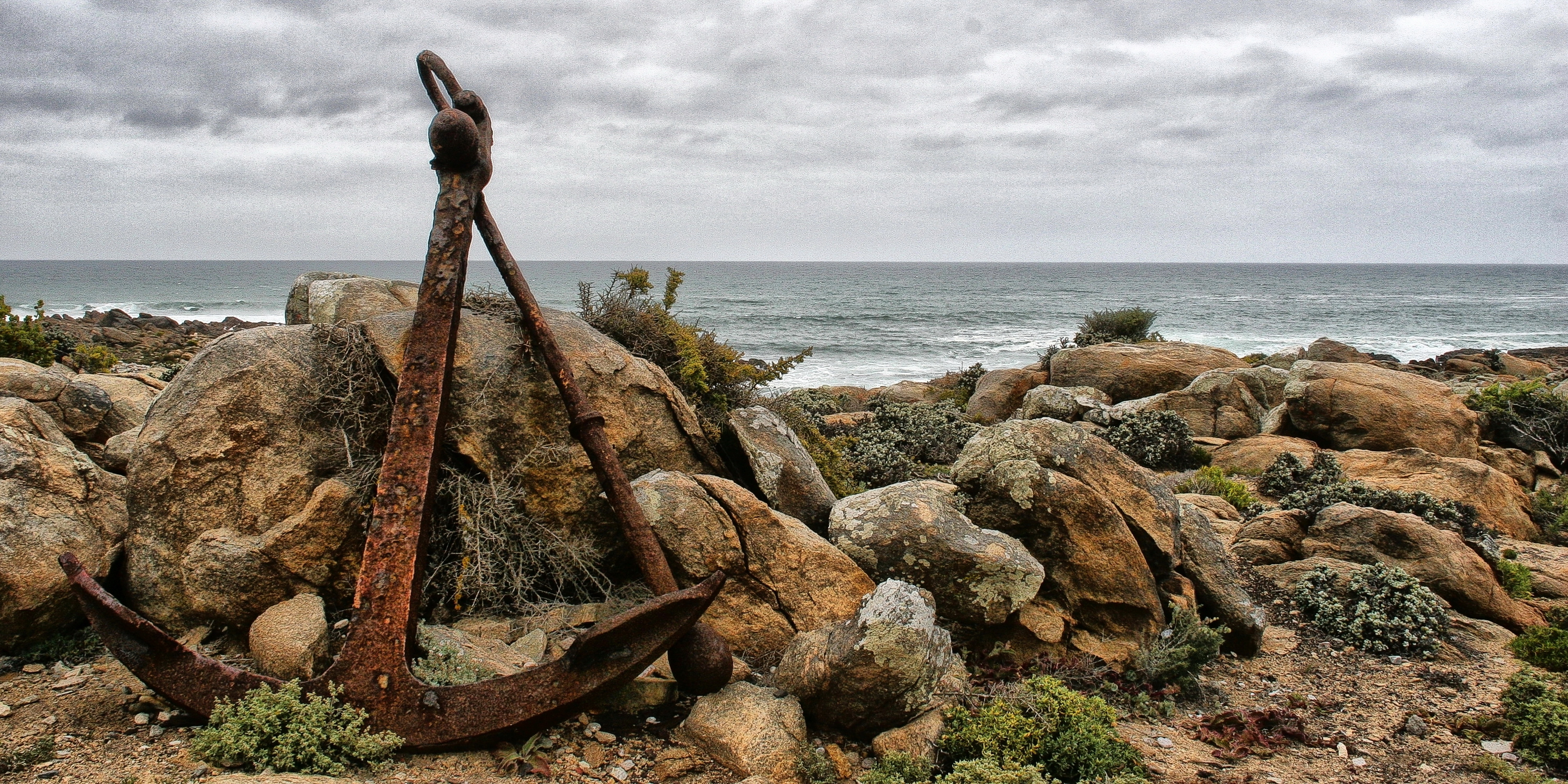
A rusted anchor on the Kleinzee Shipwreck Trail. (Photo: Chris Marais)
Continue to a Strandloper midden where ancient humans used to sit and quaff piles of limpets. A guide will show you how to tell the difference between “natural death” limpets and ones that had been hammered open by hungry proto-humans.
Nearby is the wreck of the Arosa (it went down on 16 June 1976), a concrete-carrying vessel that was allegedly run aground on purpose.
After that you arrive at a wreck that carried the rather Disney-esque name of Piratiny, a 5,000-tonne Brazilian steamer that floundered off these shores in June 1943 – possibly sunk by a German torpedo.
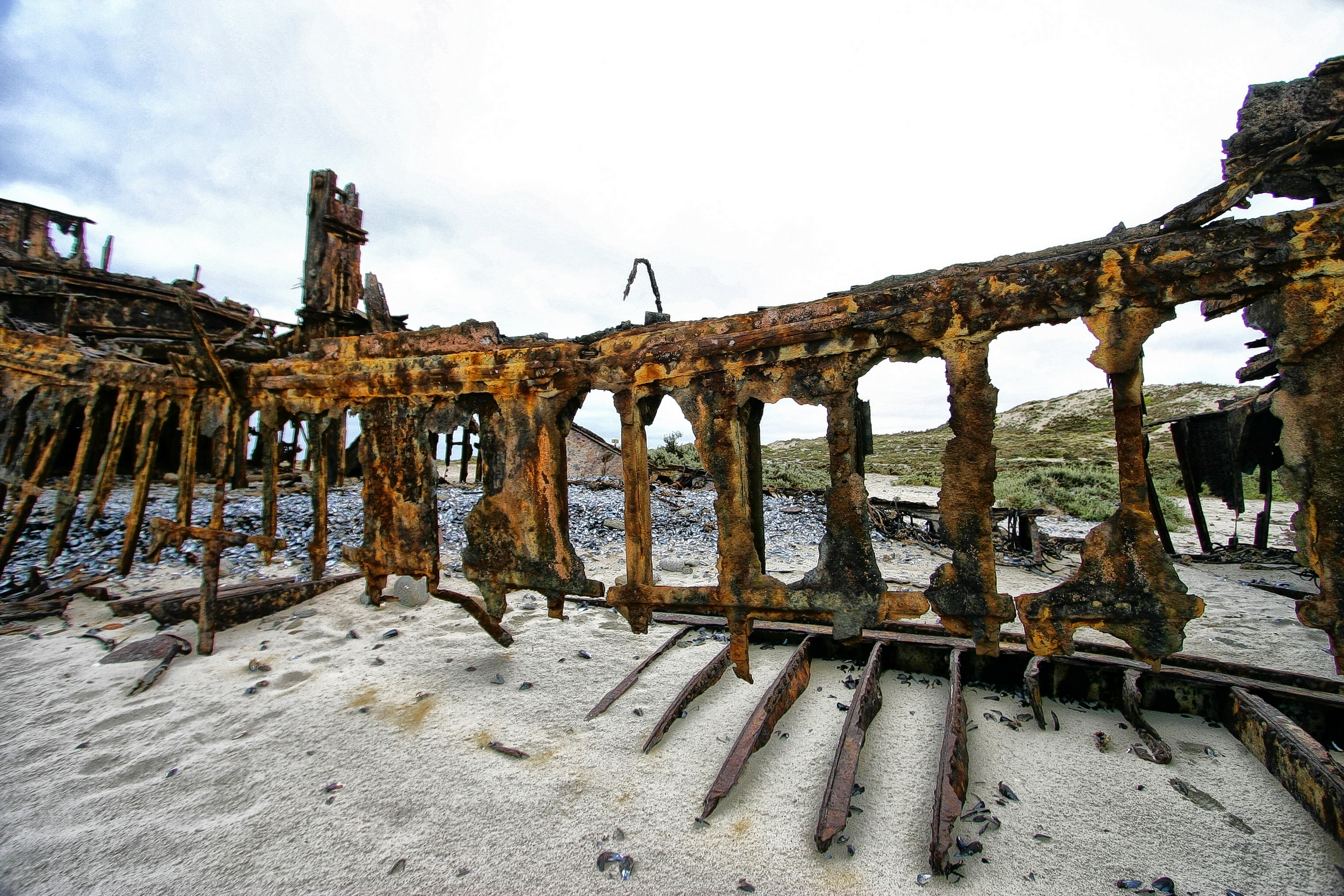
The ribcage of a shipwreck on the beach near Kleinzee. (Photo: Chris Marais)
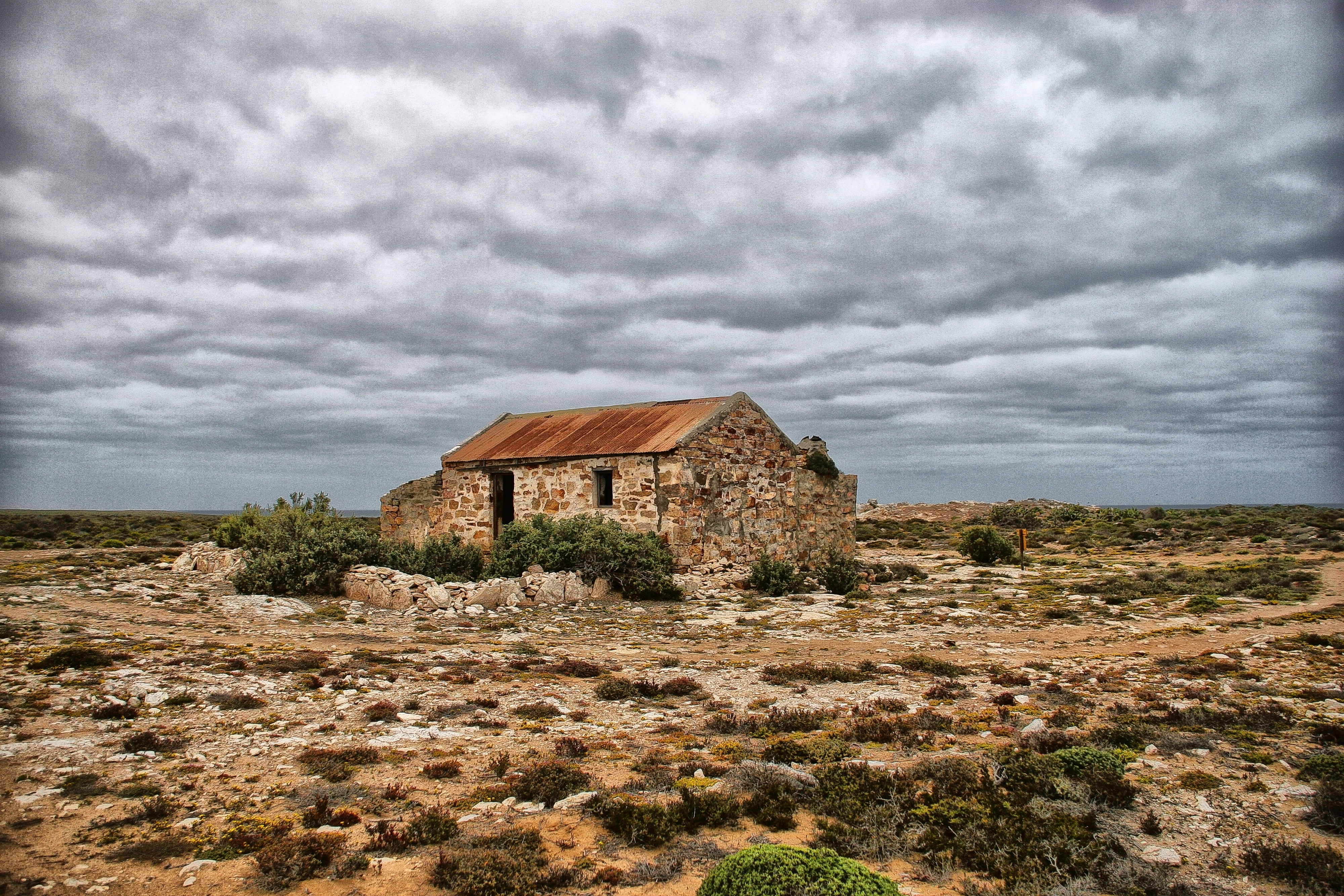
A deserted farmhouse, harking back to early settler days, within the De Beers reserve. (Photo: Chris Marais)
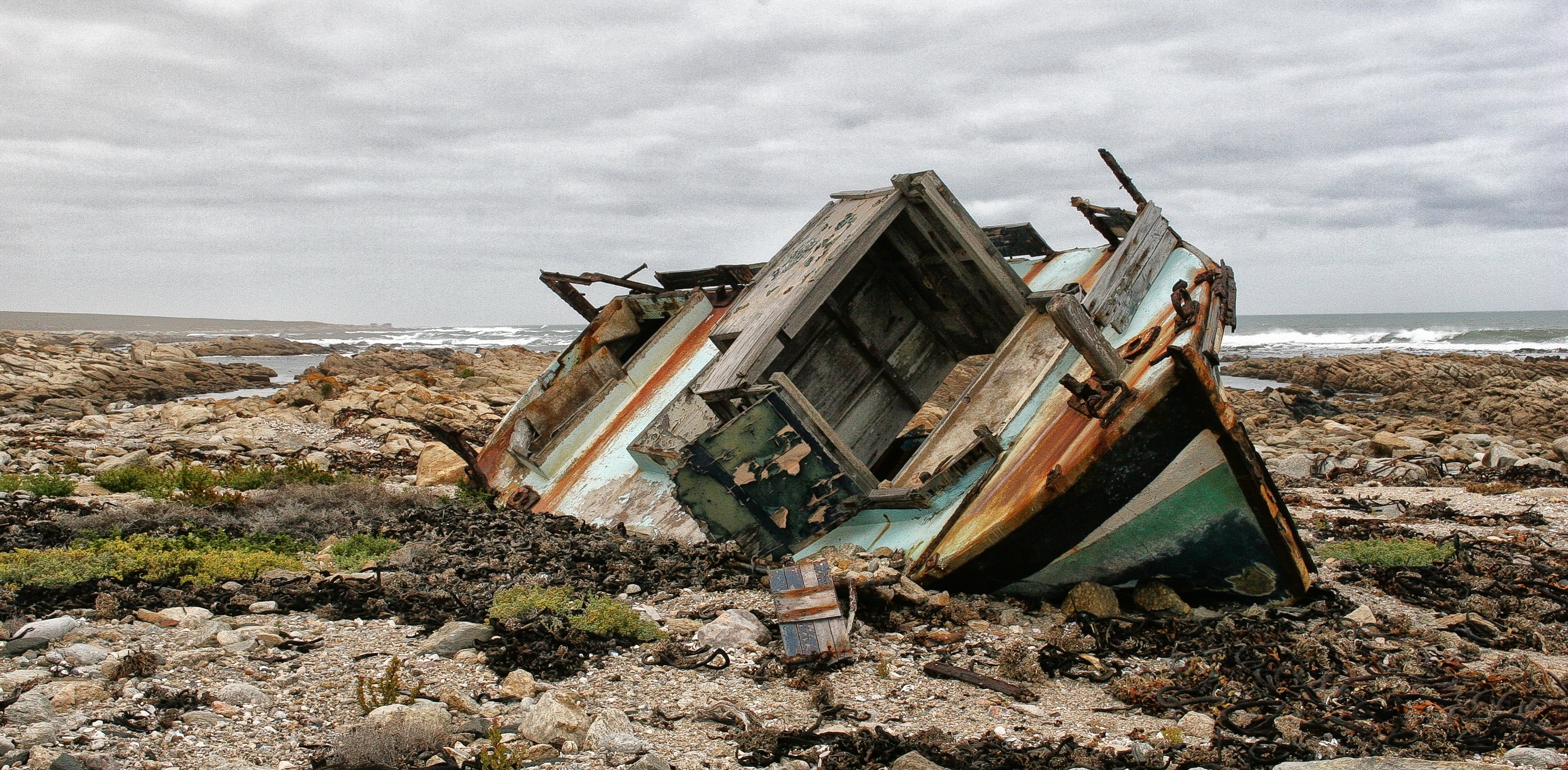
One of the hundreds of little fishing vessels that have come to grief on the West Coast over the years. (Photo: Chris Marais)
Weeks after the shipwreck, a heavy storm blew up and left the beaches covered with luggage from (and pieces of) the Piratiny, which included a lot of dress materials and bolts of silk. Several months later at the Nagmaal (church communion), all the local children came uniformly dressed in clothes made from the Piratiny flotsam.
After the Shipwreck Tour, a visit to the Kleinzee Museum is recommended.
Here you will not only be able to follow the diamond mining timeline of the area, but also gain some lifestyle insight into how the hardy people of Namaqualand lived a century ago. DM
For more information:
- Die Houthoop Guest Farm & Open Air Restaurant: www.houthoop.co.za;
- Kleinzee Shipwreck Route: Johann (JJ) du Toit.
Tel: 084 874 7388. Email: [email protected]
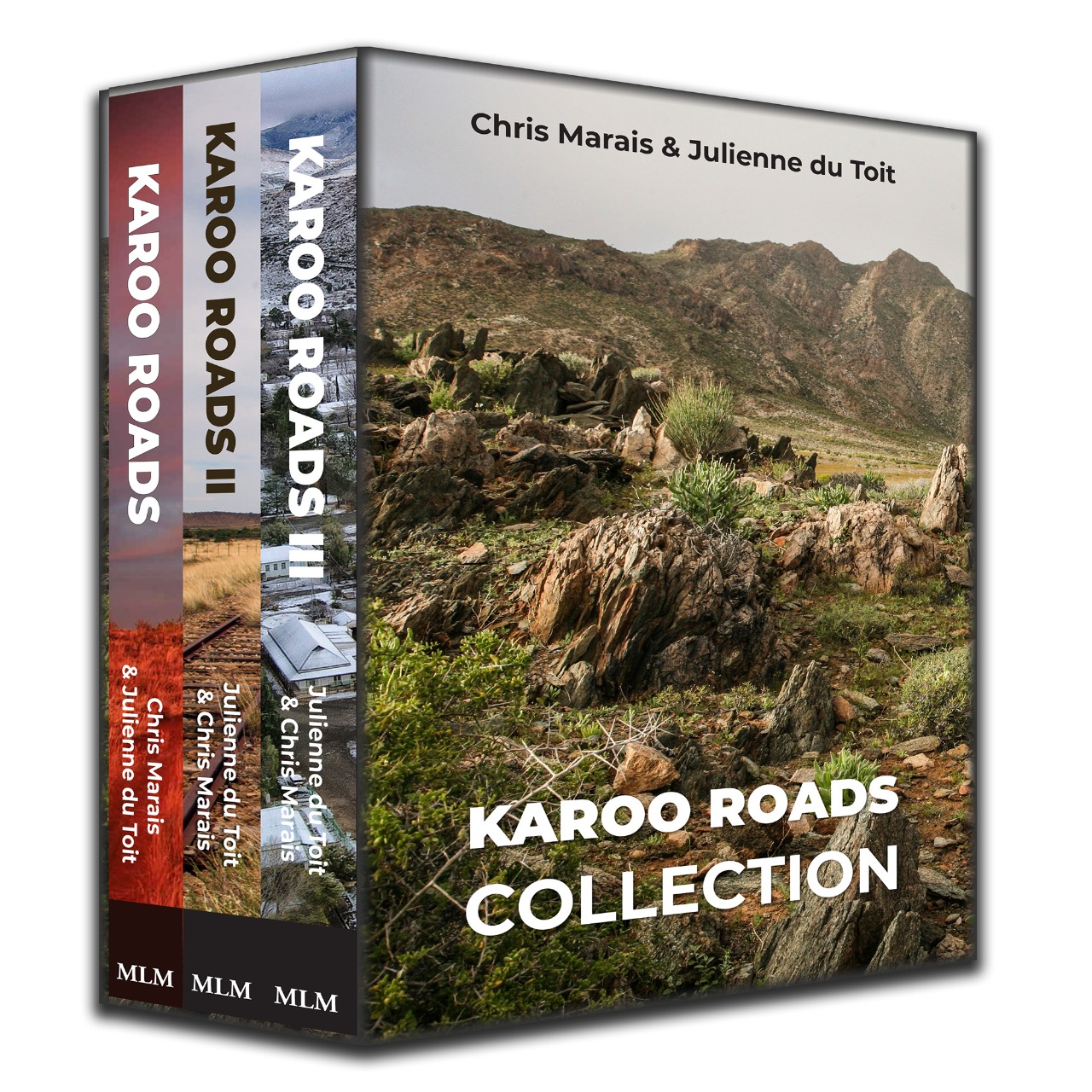
For more stories about life in the Karoo, get the three-book special of Karoo Roads I, Karoo Roads II and Karoo Roads III (illustrated in black in white) for only R800, including courier costs in South Africa. For more details, contact Julie at [email protected]








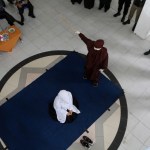










 Become an Insider
Become an Insider
Comments - Please login in order to comment.